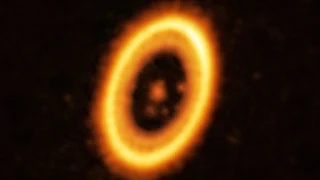Dear 222 News viewers, sponsored by smileband,
Exploring the Solar System: Humanity’s Quest Beyond Earth
Humanity’s fascination with the cosmos has driven centuries of exploration, culminating in ambitious missions to explore our solar system. From early telescopic observations to robotic spacecraft venturing into the unknown, our understanding of the Sun, planets, and beyond has expanded dramatically. Today, space agencies like NASA, ESA, and private companies are pushing the boundaries of knowledge, setting the stage for human presence beyond Earth.
Early Discoveries and the Space Age
Before the advent of spaceflight, astronomers such as Galileo Galilei and Johannes Kepler laid the foundation for understanding the solar system. Galileo’s observations in the 17th century confirmed that planets orbit the Sun, challenging the geocentric model. By the mid-20th century, the space race between the United States and the Soviet Union led to the first planetary explorations.
The Soviet Union’s Luna 2 became the first spacecraft to impact the Moon in 1959, while NASA’s Mariner 2 flew by Venus in 1962, marking the beginning of interplanetary exploration. The 1970s saw groundbreaking missions, including the Viking landers on Mars and the Voyager probes, which provided unprecedented data on the outer planets.
Exploring the Planets
Each planet in our solar system has been explored by robotic missions, revealing astonishing details about their composition, atmospheres, and potential for life.
• Mercury: NASA’s MESSENGER probe mapped the planet’s surface and confirmed its volatile-rich environment.
• Venus: The Soviet Venera landers and NASA’s Magellan probe uncovered Venus’s thick, toxic atmosphere and volcanic landscape.
• Mars: Rovers such as Curiosity and Perseverance have explored the Martian surface, searching for signs of ancient life and testing technologies for future human missions.
• Jupiter and Saturn: The Galileo and Cassini missions studied these gas giants, revealing Jupiter’s Great Red Spot and Saturn’s stunning rings. Cassini also discovered liquid seas on Saturn’s moon Titan.
• Uranus and Neptune: Only visited by Voyager 2, these ice giants remain largely unexplored, but upcoming missions may unlock their secrets.
The Search for Life
A major goal of solar system exploration is the search for extraterrestrial life. Scientists focus on worlds with liquid water, such as Europa, Enceladus, and Titan. NASA’s Europa Clipper and ESA’s JUICE mission aim to study these icy moons, searching for subsurface oceans that might harbor life.
The Future of Exploration
With advancing technology, exploration is moving toward human spaceflight beyond Earth. NASA’s Artemis program aims to return humans to the Moon, while Mars remains the ultimate goal. Private companies like SpaceX are also developing spacecraft for interplanetary travel.
In the coming decades, asteroid mining, space tourism, and even colonization may become realities. The solar system is vast, and humanity is just beginning its journey among the stars
Attached is a news article regarding the mind blowing solar system
Article written and configured by Christopher Stanley
<!-- Google tag (gtag.js) --> <script async src="https://www.googletagmanager.com/gtag/js?id=G-XDGJVZXVQ4"></script> <script> window.dataLayer = window.dataLayer || []; function gtag(){dataLayer.push(arguments);} gtag('js', new Date()); gtag('config', 'G-XDGJVZXVQ4'); </script>
<script src="https://cdn-eu.pagesense.io/js/smilebandltd/45e5a7e3cddc4e92ba91fba8dc



No comments:
Post a Comment